Bach Choral

Lesson Objectives:
-
To explore various types of melodic decorations: passing notes and auxiliary notes
-
To complete exercises based on melodic decorations
Starter:
What the difference between unaccented and accented notes, how do you define them?
Core Activity:
- Read 7.1 -7.5 chapters, make notes in your book
2. Complete Exercises on p13-16
Homework: Find examples of melodic decorations in 2 pieces of music.
Inversions, close and open positions
Open and Close positions Dubovskii
Lesson Objective: Leaps of a 3rd in the Melody
When connecting chords with intervals of a 4th or 5th between them—such as Tonic-Dominant (T-D), Tonic-Subdominant (T-S), Dominant-Tonic (D-T), or Subdominant-Tonic (S-T)—in the soprano voice, the 3rd of one chord often leaps to the 3rd of the next. In these connections, the chord voicing should alternate between open and close positions. After the leap, the melody usually moves in the opposite direction. Analyse the examples below:

Similar voicing can be used in tenor voice:
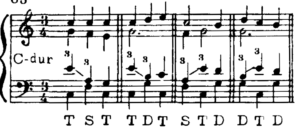
Play on the piano the example below:

Complete the exercises:
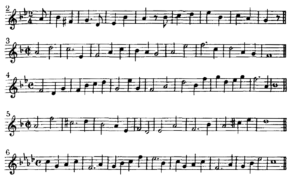
Lesson Objective: Learning Dominant 7th Chord and it`s Resolutions
Play on the piano D7th and identify open and close positions:
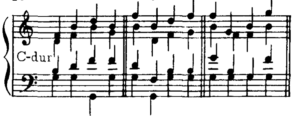
You can prepare D7th with I, Ib, Ic, IV, IVb and V,Vb chords. In the example below perfect 5th and diminished 5th are allowed.
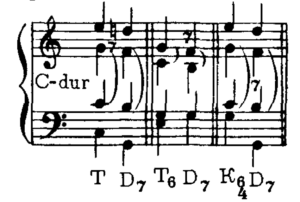
The following examples show how to add 7th tone of the chord:
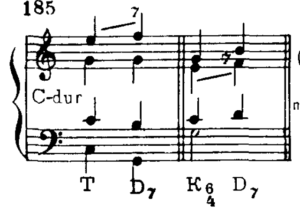
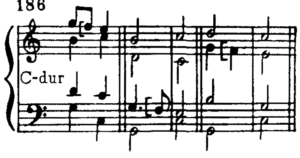

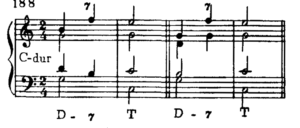
You can prepare D7th chord with Subdominant chord, in this case common note F should not be moved:
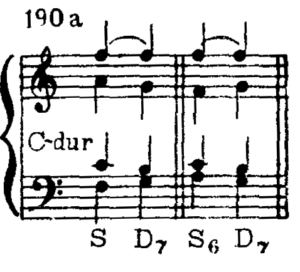
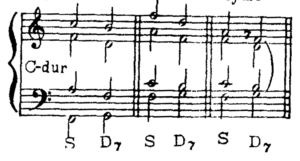
The last example is not the best solution.
D7th and it`s resolutions:
If you move the 3rd tone of D7th up, then tonic chord will be witjout 5th tone, which is acceptable. Bass tone can move up or down.

If you move 3rd tone of D7th down, then tonic chord will be complete, however the bass tone in this case should move upwards.
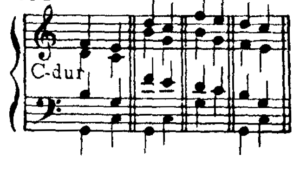
Incomplete D7th (without 5th tone) moves into complete Tonic chord. See example below:

You can prepare D7th with the following chord progressions:
IV-D7-T
IVb-D7-I
Ic-D7-T
S-Ic- D7-I
In imperfect cadences: IVb-D7; Ib-D7.
Analyse the following example, pay attention how D7th is prepared and resulted.

Complete the worksheets:
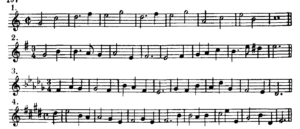
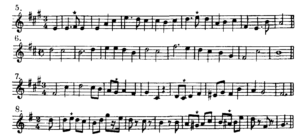
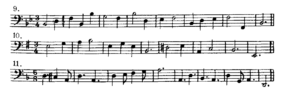
Lesson Objective:
Learning Dominant 7th chord Inversions and Resolutions

Resolutions:
The 1st tone stays in the same place, the 5th moves, and the 7th tone moves down, while the 3rd tone moves up. Pay attention to the fact that, in the last version, the D7th progresses to the second inversion of the Tonic chord.
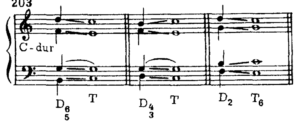
You can use D7th inversions in the same places as normal D triad inversions; however, it’s better when the 7th tone comes as a passing note.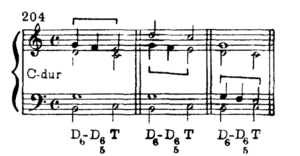
D7th 3rd inversion 7th tone appears as a passing note:
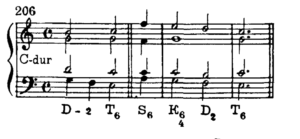 You can also prepare your D7th inversion with a Subdominant chord:
You can also prepare your D7th inversion with a Subdominant chord:

When you move from main D7th chord to it`s 3rd inversion, it is possible to move the 7th tone as a leap:

When you need to invert the D7th chord it`s better to keep your 7th tone on the same place:
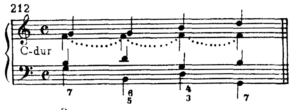
Analyse the given below example with D7th inversions:

Activity 1:
Harmonise the melodies below using D7th inversions:
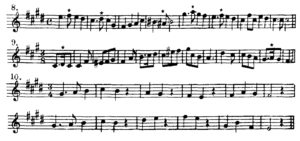
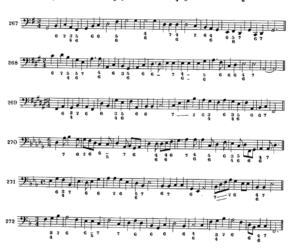

Lesson Objective: Learning II7 chord and it`s inversions
II7 and its 1st inversion is the most common in use chord, as its like a subdominant chord with a 6th on top.
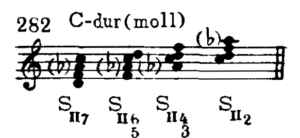
You can prepare it with I, Ib, Ic, S, Sb, Sc, ii and iib chords.
Progression of ii7 into Dominant chord the same as D7 into Tonic
- 7th tone moves down
- 3rd goes up, in root position more often moves 3rd lower
- 5th tone moves down
- 1st tone in bass moves 4th up, in upper voices it stays where it is.
As a result all ii7 inversions move to Dominant root position, except from ii7 d goes to Dominant b
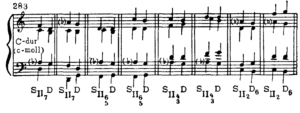
Progression of ii7 into Cadential chord
Any inversion of ii7 can move to cadential chord, just remember to keep 7th tone in the same place
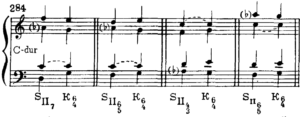
Resolution of ii7 into Tonic
Just remember to keep 7th tone in the same place.
ii7- Ib
ii7b- I (the most common progression)
ii7c- Ib
ii7d-Ic

Possible leaps
Remember to move 7th tone down only
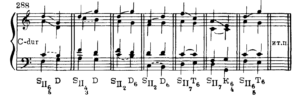
Progression into D7
II7 always moves to D7c and so on. 3rd tone should stay.

ii7 as a passing chord through Ib, vic, and Ic
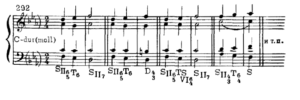
Play on the piano the example below analyze the chords:
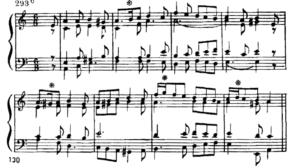
Task 1:
Complete the worksheet:
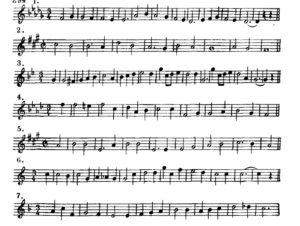
Lesson Objective: Learning VII7th Chord
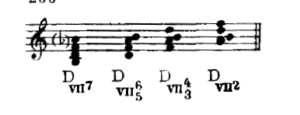
You can prepare vii7 and it`s inversions with any Subdominant chords:
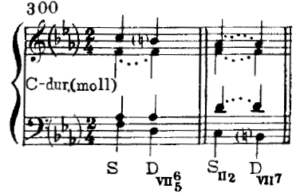
It can also appear after Dominant chords, and a bit rare after VI chord:

Resolutions into Tonic, 3rd tone in tonic should be doubled.

Vii7 can smoothly move into D7th chords, just remember to which D7th inversion you should move it:

Or can be used as a passing chord:

Analyse the example below:
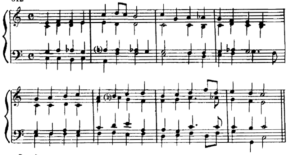
Harmonise the given melodies and basses:
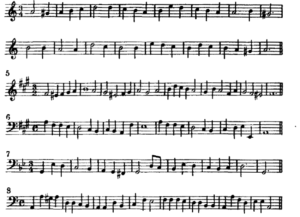
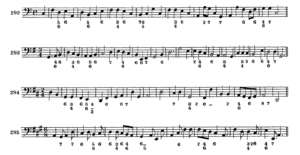

Lesson Objective: Dominant chord with 6th tone
Analyse the examples below:

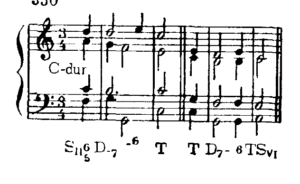
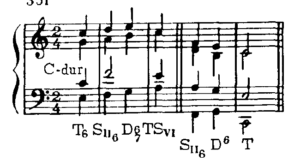

Task 1: Harmonise the melodies:
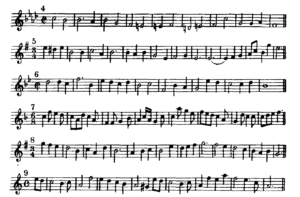
Task 2: Analyse the Nocturne and find D7th with 6th tone
Lesson 14
Secondary Dominant chords
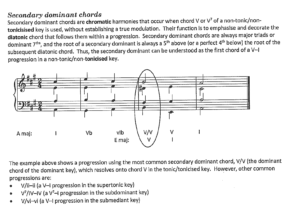
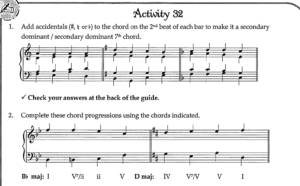
You can DD not only in Cadences, but also in the middle of the choral:

V/V into Dominant 7th
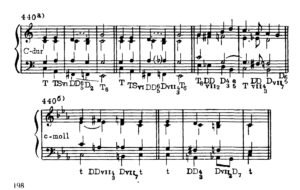
DDVII7th to D7

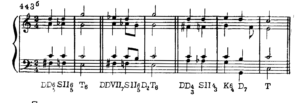 \
\
Look at the harmonised choral below:
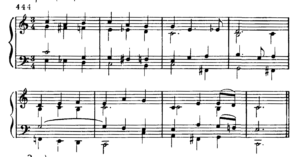
Complete the exercises:
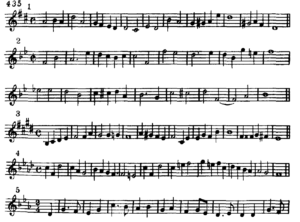
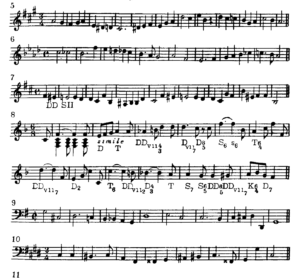
Lesson 15
Starter: The circle progression examples:
LO: Plagal cadences and other types of cadences
Exercises: 4.9-4.12; pp. 30-33
- Play the chorals on the piano and identify the cadences.
7. Chromatic and extended chords.
p45. memorise all the chords and be able to play them on the piano next lesson.
Modulations:
Bach Choral revision
Starter: Homework feedback
Lesson Objectives:
- Revise passing second inverstions
- The usage of 1st inversions
- Pratise identifying modulations and more suitable chord progressions
Homework:
Complete 2 Bach Chorals (Major and minor)
